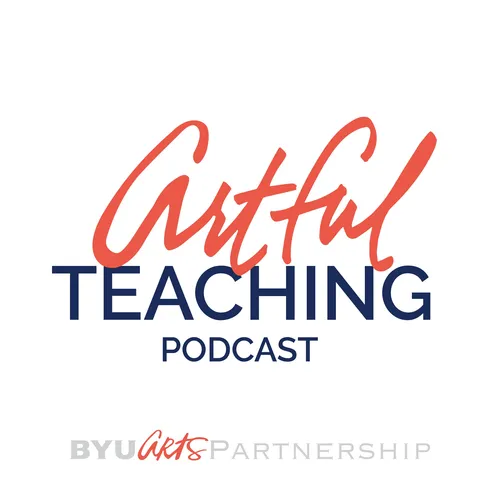Native American Series | Supporting Teachers with Cultural Sensitivity | Brenda Beyal & Chris Roberts
- Author
- Brenda Beyal, Chris Roberts, Heather Francis, Cally Flox
- Published
- Tue 16 Nov 2021
- Episode Link
- advancingartsleadership.com
Culturally-Responsive Classrooms: Helping Students Become Global Citizens
Chris Roberts, Provo City School District Arts Coordinator and Beverly Taylor Sorenson Arts Integration Coach, became involved in the Native American Curriculum Initiative when he and Brenda Beyal connected while teaching together in Nebo School District. Brenda and Chris’s “creative discontent” with teaching the same way everyone else did inspired them to do something more for children. They asked: “What is best for the students in our classrooms?” and “What will help them to become global citizens?” Together, they developed a multi-age program for students based on the arts and environmental education.
Native American Content at Arts Express Summer Conference for Elementary Teachers
Shared ideas about culturally-responsive teaching—specifically around Native American content—shaped Brenda’s and Chris’ presentation ideas at the Arts Express Summer Conference for elementary educators. Their presentation responded specifically to teachers’ questions about how to teach indigenous content appropriately and how to create culturally-responsive classrooms. Teachers developed new confidence and an “opening to a door that they were previously nervous about entering, especially when it comes to culturally-responsive pedagogy.”
Helping Elementary Teachers Create Culturally-Responsive Classrooms
All teachers are doing the best they can with the information and knowledge they possess. When Chris sees a teacher struggling to teach with cultural sensitivity, he asks questions such as, “How did you get the idea for your lesson plan?” or “How do you think a Paiute in your classroom would have reacted to your lesson?” These questions prompt empathy, which is a learning journey that supports understanding and sensitivity.
Teachers must be careful and intentional about the stories they share and the language they use. Chris shares a story about students’ replicated masks of the False Face Society, a healing society from the Haudenosaunee (Iroquois people). These masks are meant to represent evil spirits trapped inside of a sick person’s body and members of this society wear them while dancing to scare the evil spirits away. However, because the False Face Society is a very spiritual and sacred healing practice, it is culturally insensitive for teachers to ask their students to create the false face masks themselves.
Brenda continues by sharing how the term “_kiva_” has been used for a long time to represent a central space within a school. However, a “_kiva_” is a spiritual place that the Hopi and Pueblo people use for their sacred ceremonies and their councils. Brenda has met many teachers willing to become allies with the Pueblo and Hopi people to reclaim their voice by letting go of language that is culturally inappropriate and insensitive. She acknowledges that it can be difficult to approach an administrator or a team member to initiate change and understanding, but reminds teachers that being in a place of learning, the environment must allow for learning and changing to continue, especially when “no” is the answer.
Mistakes Are a Part of Developing Culturally-Responsive Pedagogy
Goodwill, or accepting that others make mistakes, is a NACI guiding principle. Brenda reminds listeners that from our mistakes, we learn, fix what we can, and move forward. Chris shares a story of a mistake: towards the end of his teaching career, he taught the Bear Dance, which is a special ceremonial dance that represents the awakening of a hibernating bear. He recognizes now that not asking anyone and not contacting the tribe to see if it was culturally appropriate to teach this content was a mistake: now, he knows that this dance is not one that the Ute tribe teaches to those outside their culture.
As Chris’s story demonstrates, Native American pedagogy sees mistakes as opportunities for learning:the hope of the NACI team is that if someone makes a mistake, that we also recognize their learning, and encourage forward momentum.. The Native American Curriculum initiative will continue to provide context, background information, and accessible culturally-responsive resources to help teachers cultivate an atmosphere of inclusion in their classrooms.
Follow Us:
- Native American Curriculum Initiative Mailing List
- BYU ARTS Partnership Newsletter
- AdvancingArtsLeadership.com
- Subscribe on Apple Podcasts
- Subscribe on Spotify
- Subscribe on Amazon Music
Don’t forget to peruse the bank of lesson plans produced by the BYU ARTS Partnership in dance, drama, music, visual arts, media arts, and more. Search by grade level, art form or subject area at www.education.byu.edu/arts/lessons
